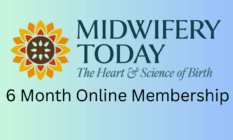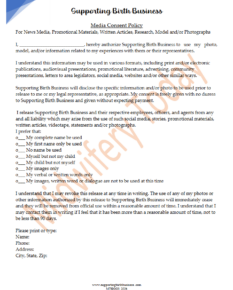
Photo by Liv Bruce
From the Editor: Birth Evangelism
Midwifery Today, Issue 140, Winter 2021.
Join Midwifery Today Join Midwifery Today Online Membership
Jan: Harriette Hartigan and I were at the Met (the Metropolitan Museum of Art) in New York City many years ago. We were in a room with beautiful paintings of mothers nursing their babies. We stood and watched people enter and observed their reactions to the stunningly beautiful, to us, room. Several different women came into the room and looked ever so quickly—and then fear apparently overtook them. They walked to the far wall, pressed their body next to it so the images were out of their line of sight, and then scurried out of the room as fast as their legs could carry them. In about five minutes, this scene was repeated four or five times. Finally a woman and her mother came in, gazed at the beauty of the paintings, and took their time enjoying each one. What has happened to women’s pride and confidence in their bodies?
Harriette: Recently I was told by a childbirth educator that women in her classes had been expressing doubt about the ability of their bodies to make umbilical cords or milk for breastfeeding. Another birth educator said she begins her classes asking the women to remember their ancient mothers.

I gaze with my ancient mothers abiding with me
Seeing with our Mind’s Eye
Women know how to give birth
Babies know how to be born
Gaze and Remember

What happened? We went from the beauty of these timeless processes to fear. How can we recover our lost confidence? Maybe we should all watch cats or dogs give birth. They do not suffer fear. They just do it. Their bodies are no better than ours and sometimes I think their minds are better, too—at least when it comes to birth.
In the past our mothers, grandmothers, and great-grandmothers weren’t afraid in same way many women are today. It was likely “matter of fact.” Lack of social media might have been their saving grace!
Fear is a function with a great purpose. It is there to keep us alert and safe, much like deer they are startled in the orchard. They run off. But when fear runs amok and is misplaced into things, we should fear not—it gets us into trouble. A thesaurus includes synonyms such as terror, horror, distress, panic, and trepidation. These are not descriptive of what pregnancy and birth are. They are beautiful miracles that can even be orgasmic.
Elizabeth Davis and Debra Pascali-Bonaro’s work tells of this with their book Orgasmic Birth: Your Guide to a Safe, Satisfying, and Pleasurable Birth Experience.Not everyone experiences birth this way, but you might encourage moms stay open to it without judging themselves if it does not happen that way. Overcoming this intense fear in our culture will take time and effort by those who are involved in birth.
It is time to reclaim birth for mothers and babies. It is time to teach women from the time they are born that their bodies are designed to grow a baby, give birth, and breastfeed their child.
In the 1970s in college, my husband and I were assigned to read an anthropology book entitled Culture Against Man. It should be Culture Against Woman. Our cultural upbringing in so many ways rob women of their power. If we all work together, we can change the paradigm. Remember what Robbie Davis-Floyd tells us: if 20% of people know and understand something, they can influence others who then influence others. It is time to get started on this. Tell everyone you know.
My sister, daughter and I were in a Verizon store ordering new phones. It took quite long so we had time to chat with the nice 25-year-old man about his goals and interests. I took two minutes of this time to tell him to have a homebirth and seek out a good midwife when he decides to start a family. He seemed to appreciate the advice. (I try not to give unsolicited advice in a public setting, except when it comes to birth.) We all must work on changing birth practices. Let’s get started on that today and think of who we can tell. Birth Evangelism.
Toward Better Birth,

 Jan Tritten is the founder, editor, and mother of Midwifery Today magazine and conferences. Her love for and study of midwifery sprang from the beautiful homebirth of her second daughter—after a disappointing, medicalized first birth in the hospital. After giving birth at home, she kept studying birth books because, “she thought there was something more here.” She became a homebirth midwife in 1977 and continued helping moms who wanted a better birth experience. Jan started Midwifery Today in 1986 to spread the good word about midwifery care, using her experience to guide editorial and conferences. Her mission is to make loving midwifery care the norm for birthing women and their babies in the United States and around the world. Meet Jan at our
Jan Tritten is the founder, editor, and mother of Midwifery Today magazine and conferences. Her love for and study of midwifery sprang from the beautiful homebirth of her second daughter—after a disappointing, medicalized first birth in the hospital. After giving birth at home, she kept studying birth books because, “she thought there was something more here.” She became a homebirth midwife in 1977 and continued helping moms who wanted a better birth experience. Jan started Midwifery Today in 1986 to spread the good word about midwifery care, using her experience to guide editorial and conferences. Her mission is to make loving midwifery care the norm for birthing women and their babies in the United States and around the world. Meet Jan at our 



















